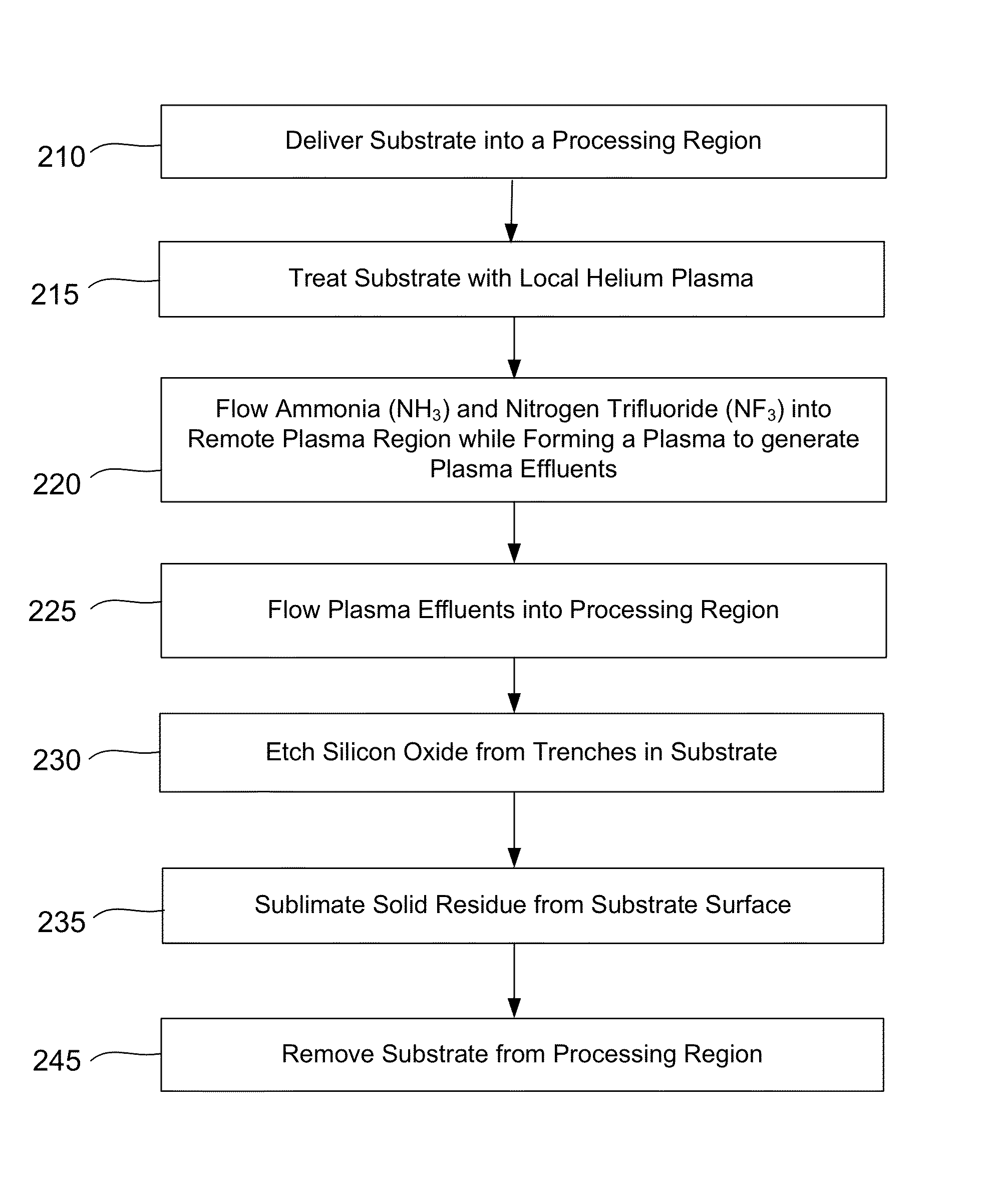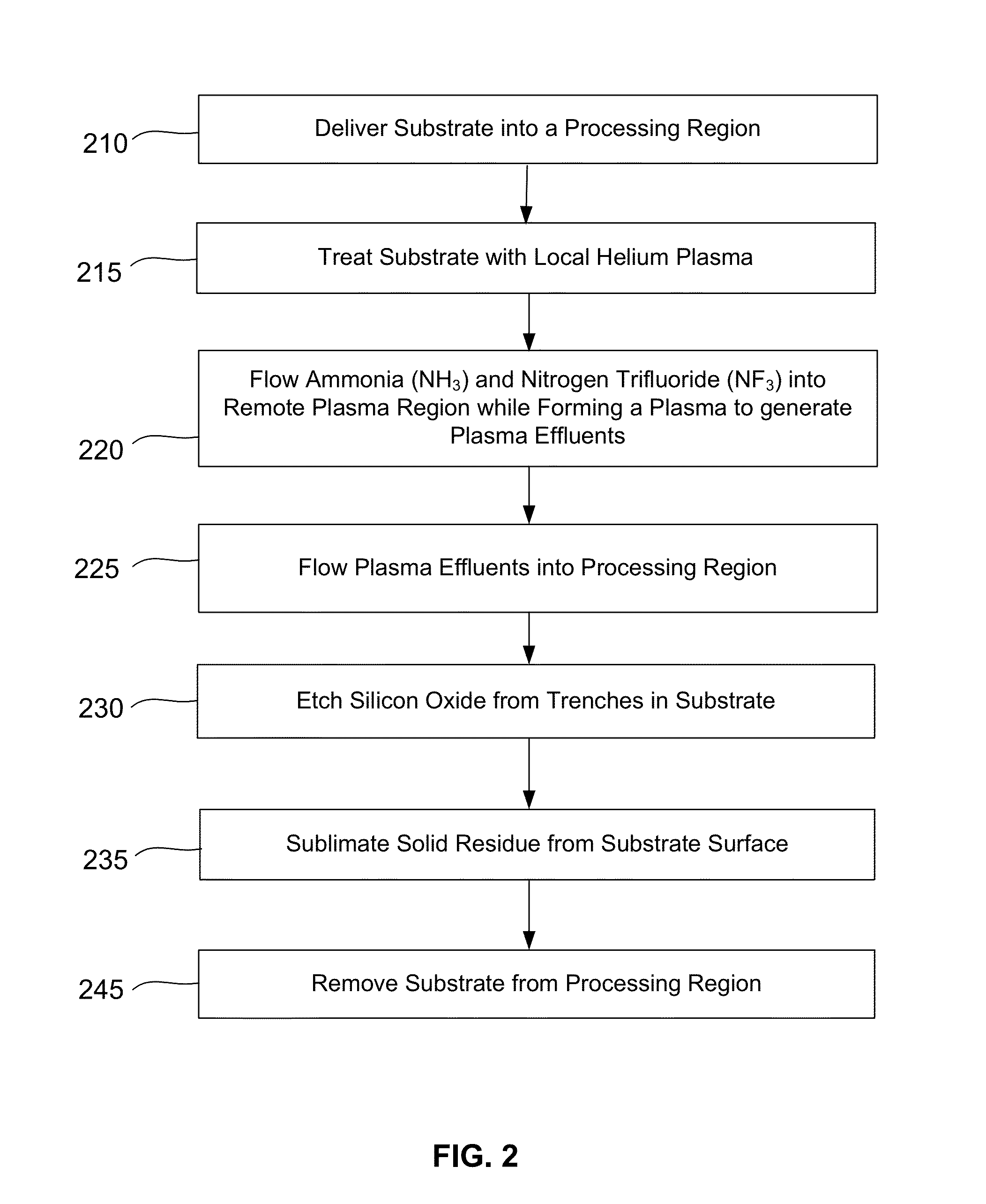Silicon oxide recess etch
a technology of silicon oxide and recess, which is applied in the direction of electrical equipment, basic electric elements, electric discharge tubes, etc., can solve the problems of trench recess variations within trenches, silicon not readily etchable, and separate trenches
- Summary
- Abstract
- Description
- Claims
- Application Information
AI Technical Summary
Benefits of technology
Problems solved by technology
Method used
Image
Examples
Embodiment Construction
[0020]A method of etching silicon oxide from a trench is described which allows more homogeneous etch rates across a varying pattern on a patterned substrate. The method also provides a more rectilinear profile following the etch process. Methods include a sequential exposure of gapfill silicon oxide. The gapfill silicon oxide is exposed to a local plasma treatment prior to a remote-plasma dry etch which may produce salt by-product on the surface. The local plasma treatment has been found to condition the gapfill silicon oxide such that the etch process proceeds at a more even rate within each trench and across multiple trenches. The salt by-product may be removed by raising the temperature in a subsequent sublimation step.
[0021]Siconi™ etch processes are an example of a selective dry etch process and have used a hydrogen source such as ammonia (NH3) in combination with a fluorine source such as nitrogen trifluoride (NF3). The combination flows into a remote plasma system (RPS) and ...
PUM
 Login to View More
Login to View More Abstract
Description
Claims
Application Information
 Login to View More
Login to View More - R&D
- Intellectual Property
- Life Sciences
- Materials
- Tech Scout
- Unparalleled Data Quality
- Higher Quality Content
- 60% Fewer Hallucinations
Browse by: Latest US Patents, China's latest patents, Technical Efficacy Thesaurus, Application Domain, Technology Topic, Popular Technical Reports.
© 2025 PatSnap. All rights reserved.Legal|Privacy policy|Modern Slavery Act Transparency Statement|Sitemap|About US| Contact US: help@patsnap.com



